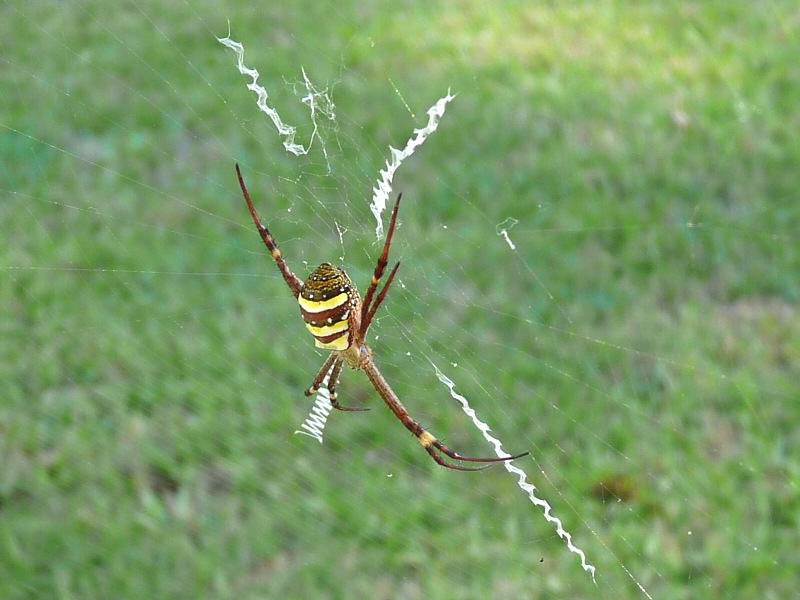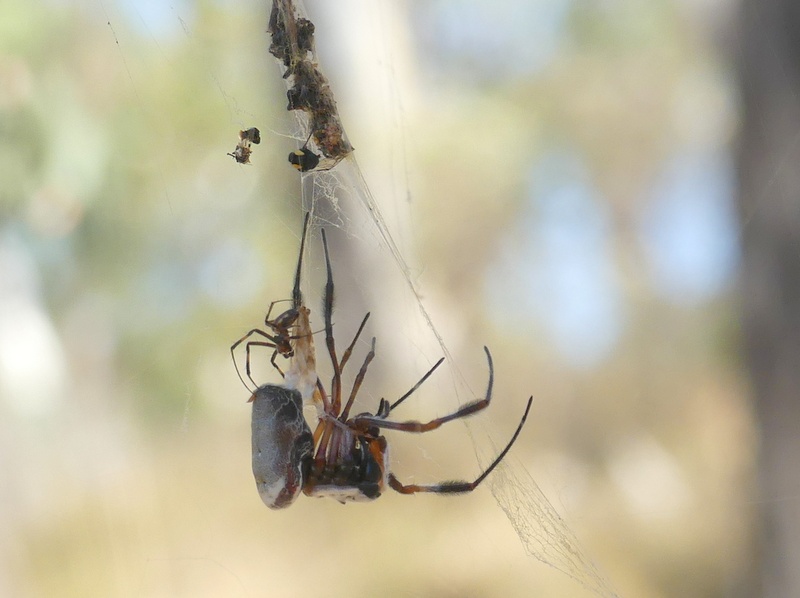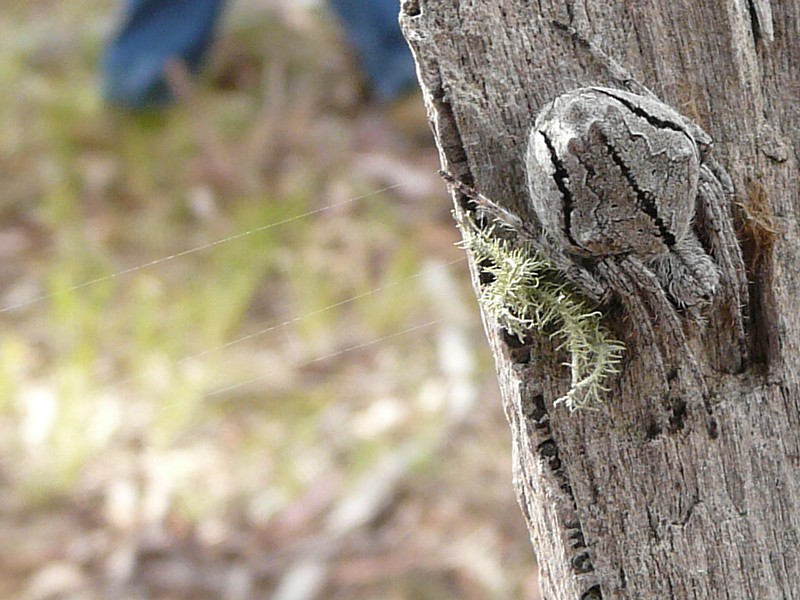
A St Andrew’s Cross spider on its UV-reflective web. Photo: Ian Fraser.
I have read a thread of spider silk the thickness of a pencil could stop a large airliner in flight, though as far as I’m aware the suggestion hasn’t been tested.
The real issue here though is that spider silk, and thus a spider web, is an extraordinary structure (though it isn’t designed to catch aeroplanes).
I’m also aware some will have already stopped reading a column by someone who thinks spiders are just wonderful, but that’s OK. But a favour – please read the rest before you comment.
There are far too many different spiders in and around the Capital region to do justice to here, so I’ll start with the familiar garden orb-weaver spiders that build sometimes massive webs in the form of spiralling wheels to trap unwary insects.
Found throughout Australia and much of the world, they are common in bushy gardens and in the woodlands and dry forests of Canberra Nature Park. But many of them work only at night and are well camouflaged to hide on tree trunks during the day.

Orb-weaving spiders mating – the much smaller male will be lucky to survive the experience. The packages above them are previous meals. Photo: Ian Fraser.
The web is built afresh every night, hanging from a strong silken ‘bridge’ between two branches or trunks, and anchored to the ground by lines from the ends of the bridge to form an inverted triangle. A complex spiral of lines works inwards and she (it’s always a ‘she’) waits upside down in the centre. A vibration in the web brings her hurrying to wrap the struggling insect in silk to immobilise it, before a quick venomous bite finishes it and she eats it.
In the morning she will dismantle the entire web and eat it too to prevent wastage.
But there’s nothing simple about the silk. In fact she can create different types of silk on demand for different purposes, but all are produced from the spinneret glands on her abdomen. The sticky spiral threads dotted with glue are very different from the dry access threads that she runs along. She also produces a sheet of silk to wrap prey in, and a special silk in which to wrap her eggs.
She has no interest in biting you, but if you force her to do so by harassing her, you would suffer very little from it – the venom is designed to pacify a struggling insect, not a huge mammal. In fact nearly all spiders are harmless to humans.

An orb-weaving spider camouflaged on a stringybark trunk in Canberra Nature Park. Photo: Ian Fraser.
The male is much smaller, and you can often spot him lurking cautiously in the web. Courtship, a very risky business for him, is conducted by plucking the web with a very specific ‘tune’ to let her know he’s there as a suitor and is not a trapped lunch.
Nonetheless, once he’s fulfilled his purpose with her, he’s very much on the menu afterwards; his best chance of survival is if she’s already full of a moth, fly or beetle.
A related group of web builders includes the St Andrew’s Cross spiders which, unlike the orb-weavers, have a brightly coloured abdomen and a surprisingly conspicuous web. She builds a broad shimmering white cross of zig-zagged silk into the web and sits in the middle of it.
It has been assumed she is drawing attention to the web to prevent clumsy big animals from blundering into it and undoing her good work. But while that is doubtless a side benefit, there is much more to it.
We now know the cross reflects ultraviolet light, which attracts many insects, increasing the chances of a meal. However it also makes the spider conspicuous to predatory birds and wasps, so there is probably still more for us to understand.

One of our home hunts(wo)man spiders, tasked with managing the silverfish. Photo: Ian Fraser.
Web building is a relatively modern spider innovation. The ancient spiders, funnel-webs and trapdoors, still have the gill-like lungs of their aquatic ancestors and are largely confined to their moist silk-lined burrows.
More modern spiders have insect-like breathing systems, freeing them to hunt away from their burrows. A good example of these ‘next generation’ spiders can be found in our houses, where the active huntsman (or more accurately huntswoman) spiders control the silverfish and cockroaches for us.
The most modern and successful spiders however, sit and wait in the wonderful web which is, above all, a superb labour-saving device.
If you don’t like spiders, I don’t suppose anything I say will make a difference. They really are pretty wonderful though.
Original Article published by Ian Fraser on Riotact.










